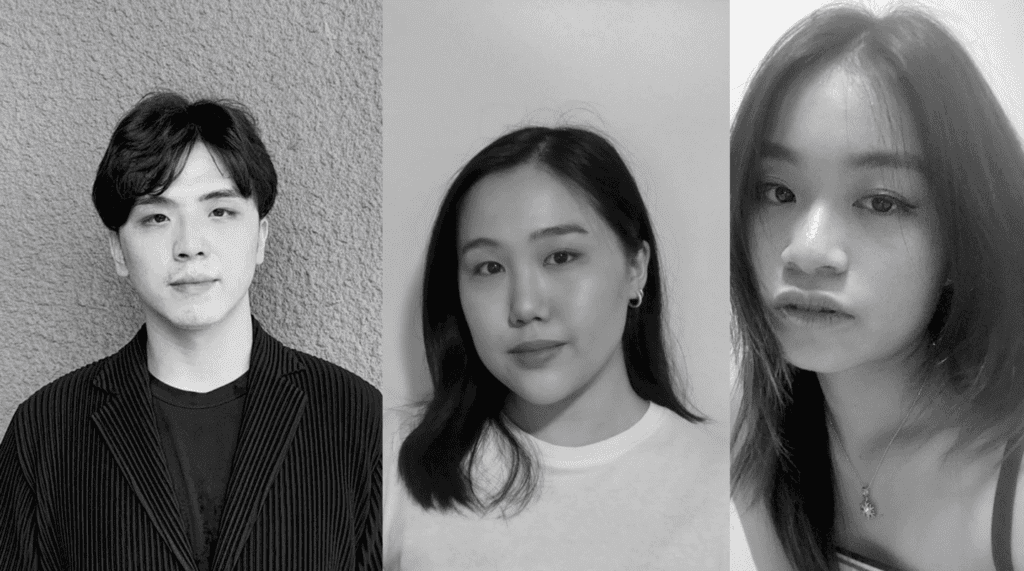Fact is, we all have a relationship with fashion. It’s true even for those of us who couldn’t care less about what we drape on our bodies. In one way or another, we all consume and support the fashion industry and this particular industry is one of the most polluting in the world. The fashion industry has a long way to go before it can rectify the damage it has inflicted. But all gory and sad endings aside, not all is lost. A spark of hope emerges from the gloom and doom. The next generation of aspiring designers – conscious and aware of their social and ethical responsibility to the environment are paving a new way forward.
“Sustainable fashion is the future. It’s just the way forward” Joshua Ng




How did you get into sustainable fashion?
Joshua: I chose to work on sustainable fashion because I feel that sustainable fashion is the future. It’s not a choice anymore if I want to stay in the fashion industry. It’s just the way forward.
Ruby: To be honest, I agree we need to be sustainable now but why I started was because I wanted to save cost. I use dead-stock material and fabric to up-cycle them.
Sarah: In our second year of university, we had to pick a track for our project. I chose fashion ecology which led onto sustainable fashion. I specifically chose an alternative material to work with because I’m interested to see how we can push that further.
What does sustainable fashion mean to you?
Joshua: There are many aspects to sustainable fashion, but my main concern is being environmentally friendly and responsible when designing and producing.
Ruby: Same, it’s the environment. To produce less waste and be mindful of the environment when producing garments.
Sarah: For me, it’s about creating change. The fashion industry has created a lot of environmental and ethical issues, but designers have the capacity to address these issues.



Describe your individual projects to us.
Joshua: My method is called “spaghetti cutting”. It is a method to use the entire width of the fabric. I came up with a formula and I determined the perfect width to cut the strips of fabric. I found that 7 inches are the best width length and that reduces the amount of waste significantly. The wastage was only from the collar, neck, and armhole which is very little compared to the conventional method of pattern cutting. In a real-life situation, the conventional way will not fully utilize the fabric but the “spaghetti cutting” method will, no matter what the outcome of the garment is.
Sarah: What I did for my project was to explore agar, alginate, and starch-based bioplastics. I explored what was accessible to me at the time. Through the process, I was able to formulate and create many different recipes. I was also able to categorize them in their own significant properties or designs. Through that, I was able to apply that to fashion design. I created small embroidery pieces and got them laser cut and had them directly on fabrics. The idea was to rethink and repurpose the garments by taking out the embroidery pieces. I also thought about using starch to make buttons and fasteners. I 3-D printed and created my own silicon mold of buttons and then used tapioca starch to make them so that the garment would be 100% disposable. It’s a different possibility of how we can wear our clothes. Lastly, I also found an alternative material for leather. It had the same durability and texture as leather. Through this process, it has created new challenges for me because these garments are not meant to last or to be repaired. They have some level of durability, but it is disposable at any point in time. To create colors, I used pigment powder. Next for me would be to explore different possibilities on how to dispose of the garments besides just in soil and worm compost.
Ruby: For my project, I learned that people threw away their clothes because they had holes in them. So, I tried to reinvent the holes. I make the holes look “perfect” by adding new elements to the old garment. I thought this was a better way because apart from the hole, the rest of the garment still was in good condition. So, I reinvented the garment by adding reflective threads, embellishments, and embroidery. I tried to take the problem and turn it into a design as opposed to an accident.




Human consumption vs. designing process – Should we change our consumption, or must designers change their designs?
Joshua: I think both must change. Human consumption is a problem. It’s like supply and demand. If more people want, brands will produce more. But my focus is to reduce waste even in doing fast fashion. Most fashion production has a 25% wastage and that is not inclusive of over-production for example if people don’t buy. My aim is to reduce waste in general. It depends on the design––spaghetti cutting allows me to reduce wastage to only 10%. I think brands have the power to change human mindsets. Fashion wasn’t always so affordable. Fast fashion produces huge quantities at such a low cost which makes it possible for them to sell clothes so cheaply. So, they allow people to buy more because it’s so affordable.
Ruby: I agree with everything that’s been said. I noticed people throw out most of their clothes because of one small hole or rip. I thought to design and upcycle clothes so they can become something new. I used deadstock fabrics from fashion companies. Essentially I used fabric that was already made instead of producing new material.
Amelia: So it’s a team effort. Designers, consumers, and everyone in between have to play a part in wanting to consciously be sustainable.
Sarah: I was targeting textile waste. Human consumption is ever-present, and it’s accelerated by fast fashion. So, I thought about rethinking the material of the clothes we wear and how long they last. Since people do not keep their garments for long, I made small batches of clothes made from agar and bioplastics, so the garments are biodegradable. I experimented by placing the clothes in worm compost and it would take about 2 weeks to a month to decompose without any added additives.
What is fashion’s biggest challenge with sustainability?
Joshua: Finding the balance between being sustainable and making profits. Hence, I feel some brands do greenwashing.
Ruby: Being sustainable is more expensive. The way we execute sustainability could also be quite costly. I think cost would be the main problem.
Sarah: I think it’s not easy to be accountable when we try to be sustainable. I think it’s hard to be forward-looking. So, how does one set new goals after completing a specific sustainable goal, to continuously be sustainable? I think that can be quite a laborious and tiring process.
Are we educated enough about sustainability?
Joshua: I think people are educated but not everyone cares. I think people in Southeast Asia know about sustainable fashion. We have exposure to sustainability. However, people are so worried about the cost of a garment. Not how much it costs the environment. The price of the garment comes first. But knowing and wanting to do your part is different. The mentality is “Why should I care if everyone is doing it? Me alone, isn’t going to make a difference?” I think that is a hard mindset to change.
Ruby: I think they don’t know in-depth about what is happening. Maybe they know about what’s happening on the surface. For example, they don’t know how much water is used to make cotton. They don’t know in-depth facts on how it’s affecting the earth.
Sarah: We’re still stuck in the cycle of consuming. Also, nowadays, we buy a lot of clothes and then we would sell them all at once. There is a rise in secondhand culture, trading, and re-selling our clothes. While this seems to be good, I think it can also be used as an escape. This can be used as a way for us to brainwash ourselves thinking that we are sustainable but it’s just an escape so that we can buy more clothes. Maybe we need more education on consumption, so we don’t get stuck in this vicious cycle of buying and selling.
Joshua: I would like to add, that maybe a lot of brands try to sell that they are sustainable, but we will never know if they really are. I think brands know the importance of sustainability but at the end of the day, it’s a business. Perhaps, I am optimistic now as I am young and fresh out of university, so the sustainability aspect is my priority but who knows if I get into the business, it might be harder to achieve. I have an inner conflict about whether it would be hard to have a business built on sustainable grounds.
Where do you envision yourself and fashion in five years’ time?
Ruby: I don’t think there’s going to be much of a difference in the fashion industry. Not a drastic change, at least. Perhaps about the same. I think it’s hard for people to adapt to slow fashion. Where I would be is to educate people on how to mend their clothes. Workshops to make new garments out of their existing clothes and crafting. I envision myself doing that.
Sarah: Hopefully I would be more involved in a community where I can have a network to increase my resources. Especially while doing this project, I had to reach out to a lot of people to get resources to see better results. There’s a strong focus on new technology for fashion. I hope I’ll be more involved in learning about new technologies to facilitate alternative materials.
Joshua: I don’t see myself as a fashion designer. I would like to be a pattern cutter. I am so heavily invested in pattern cutting because I think how you cut the piece of the pattern is an integral part of where most waste is produced. Hence, I hope to stay in the production line. I would like to incorporate better strategies to reduce waste. I would want to work with fast fashion brands because they produce the most waste, so I’d like to innovate more methods to reduce waste within the fast fashion industry.

